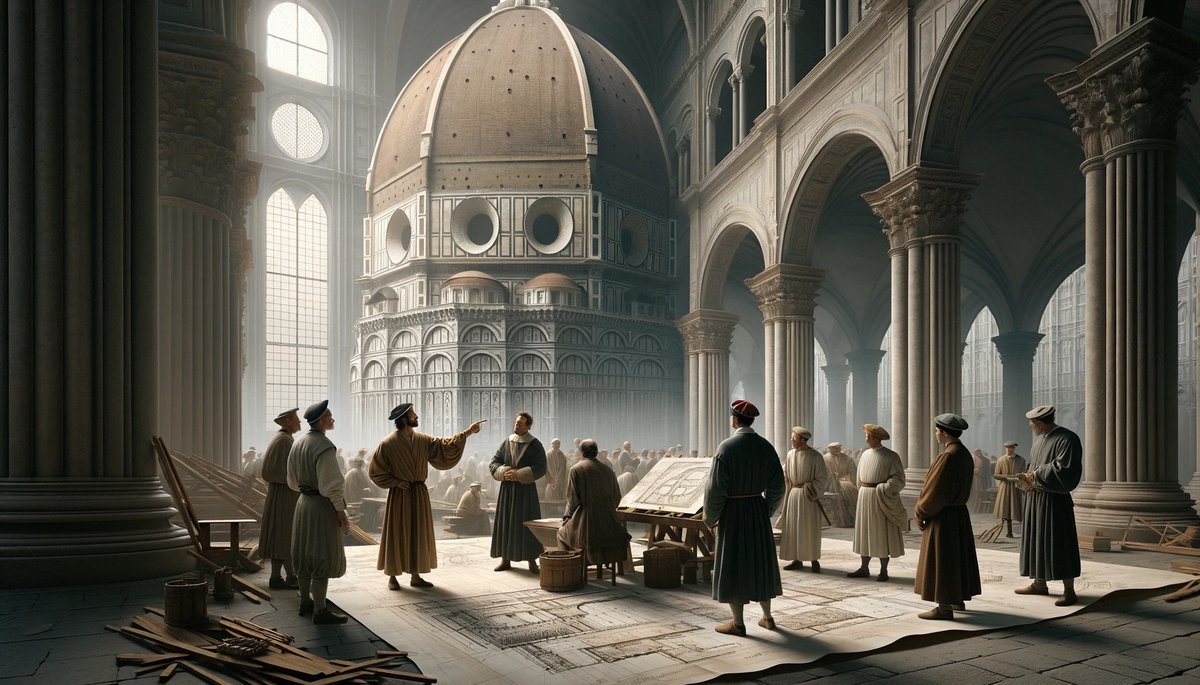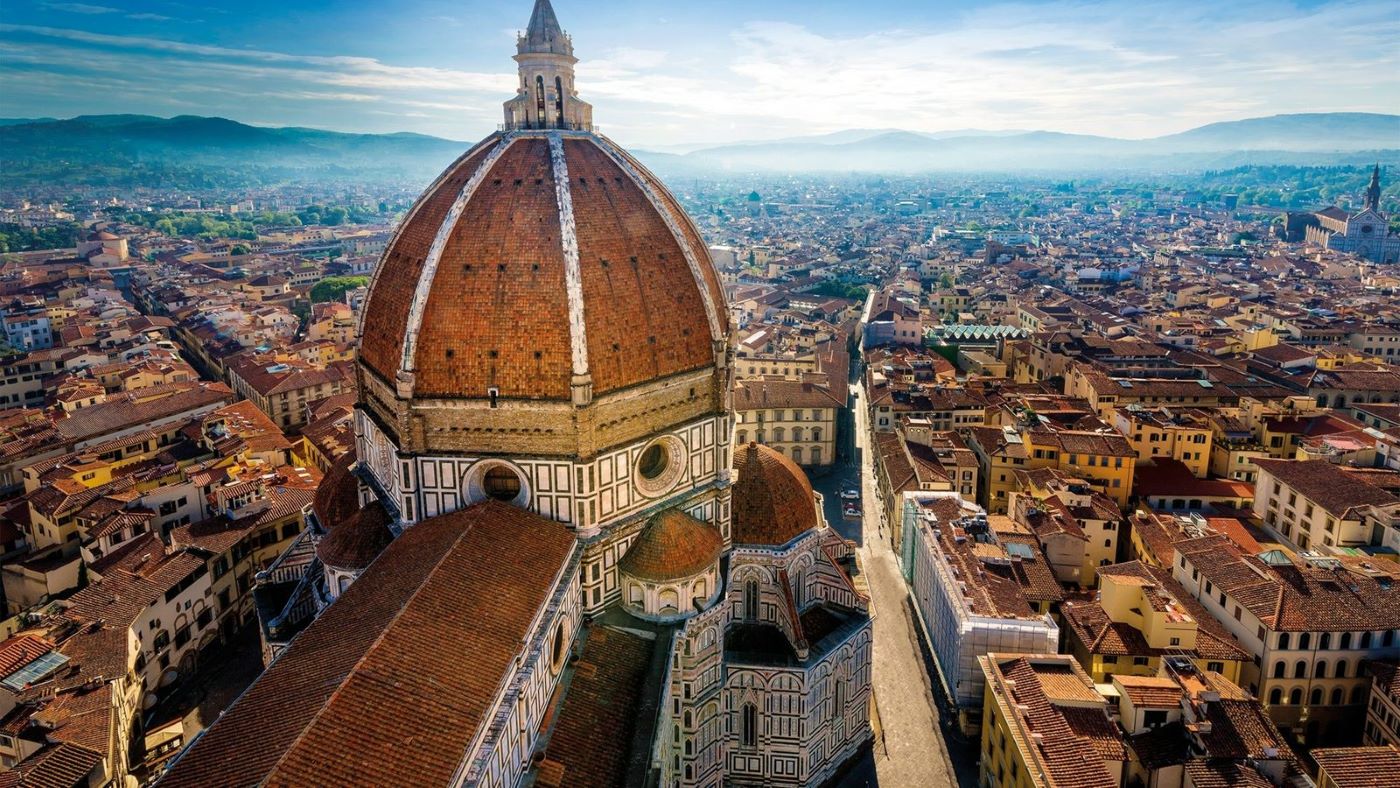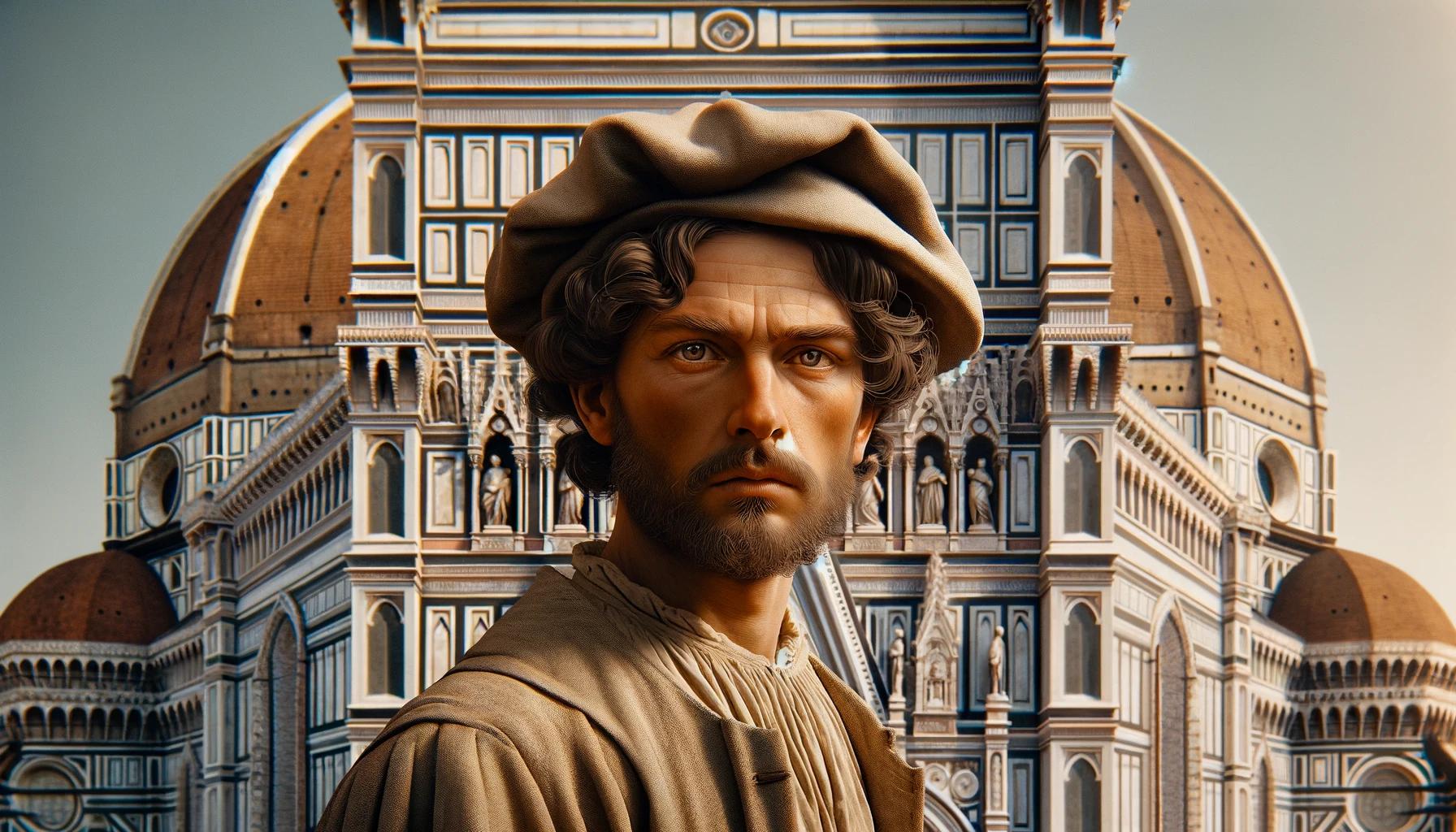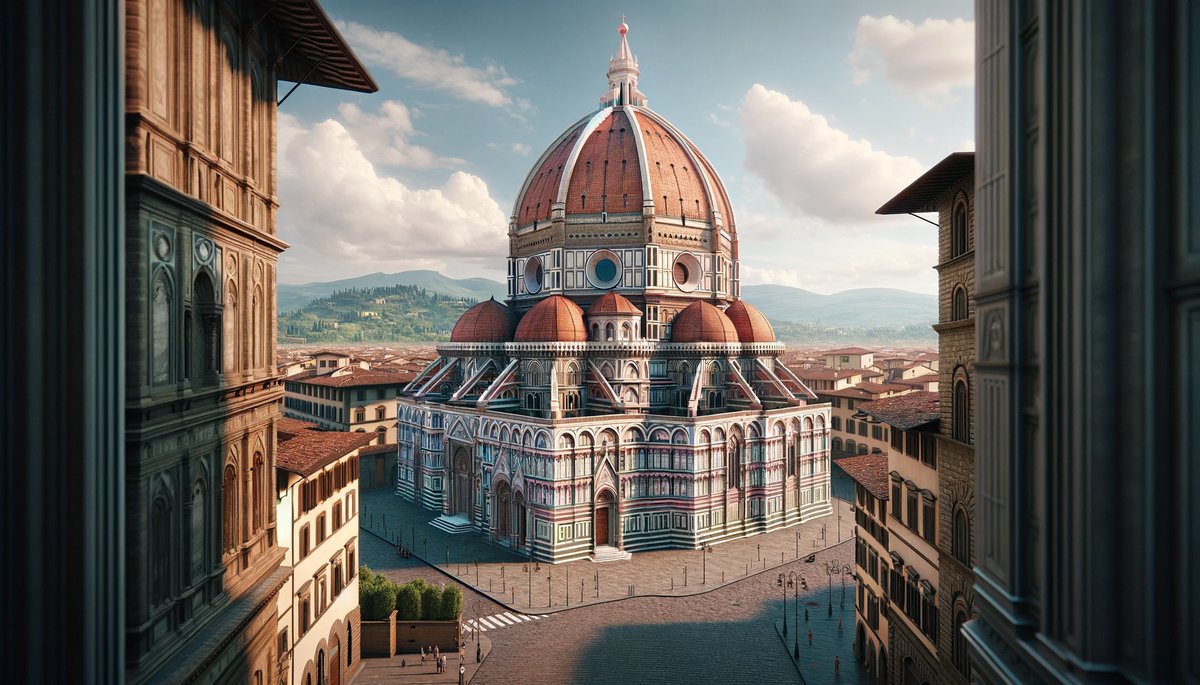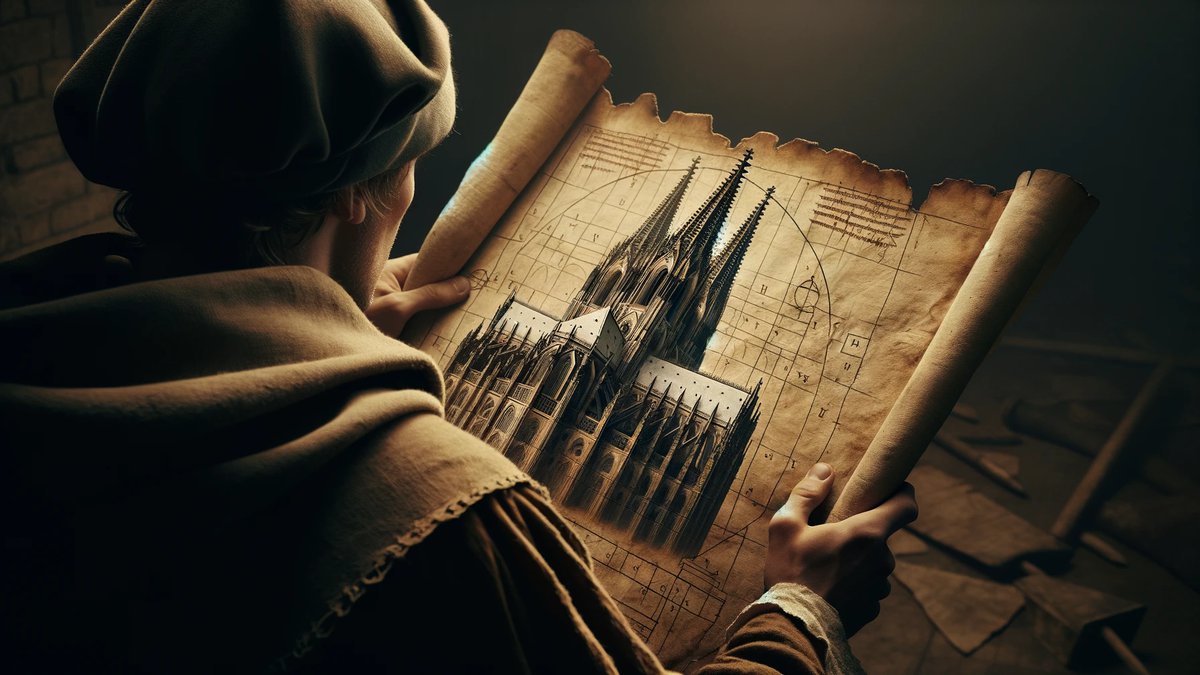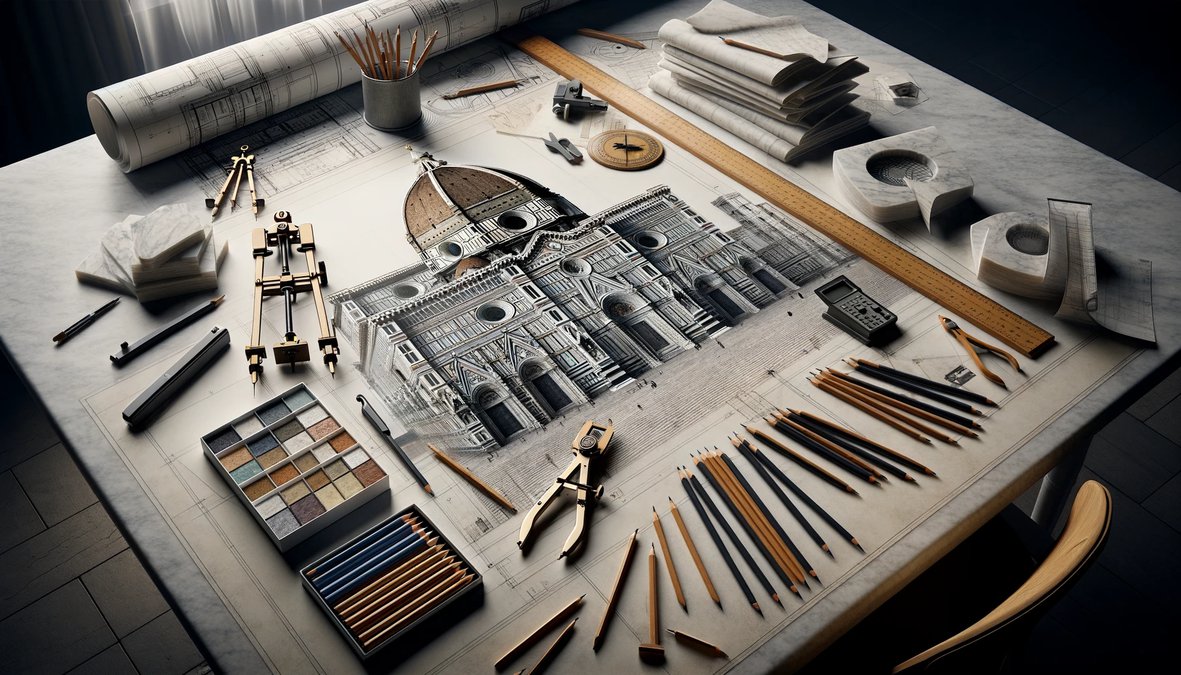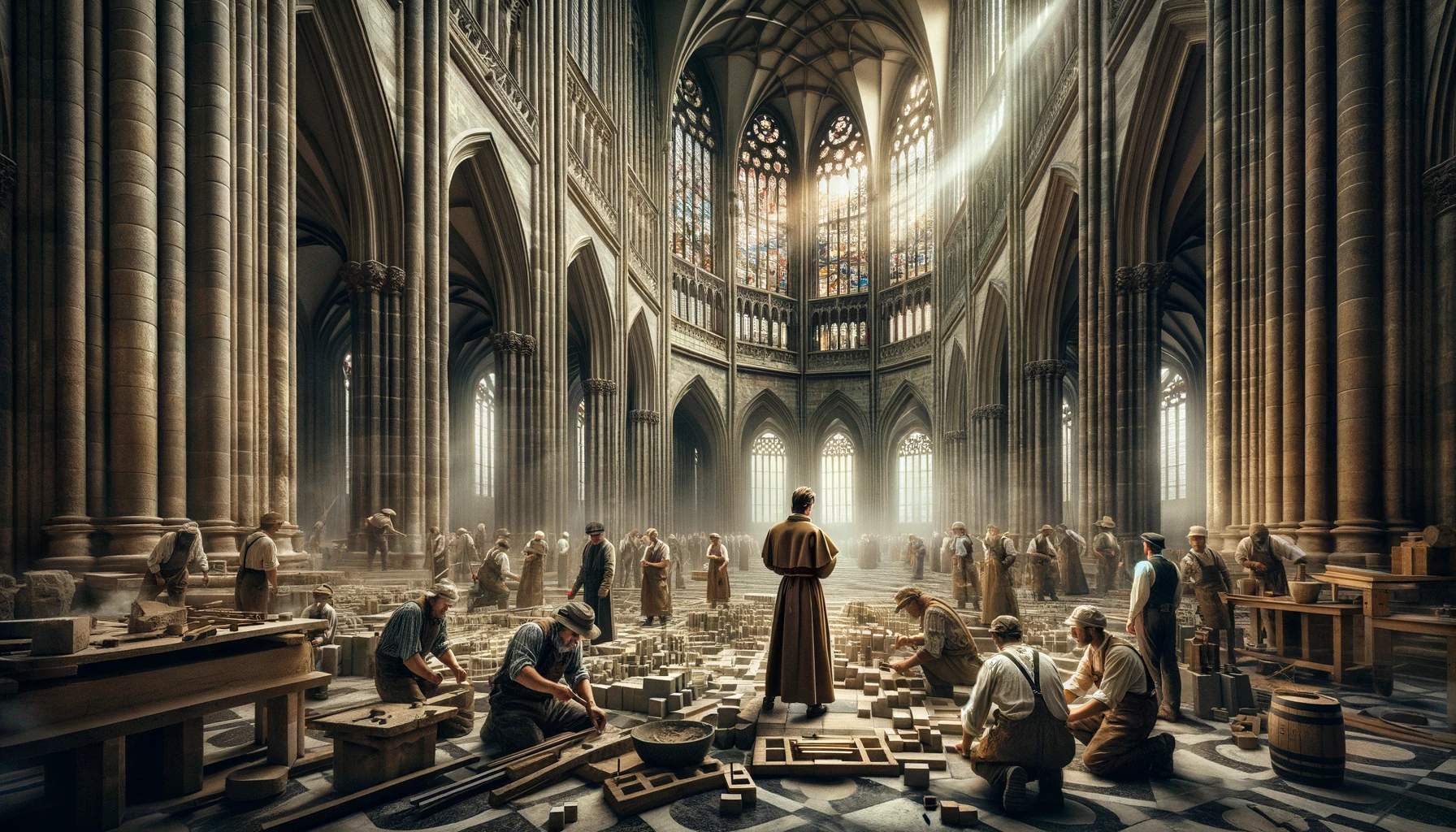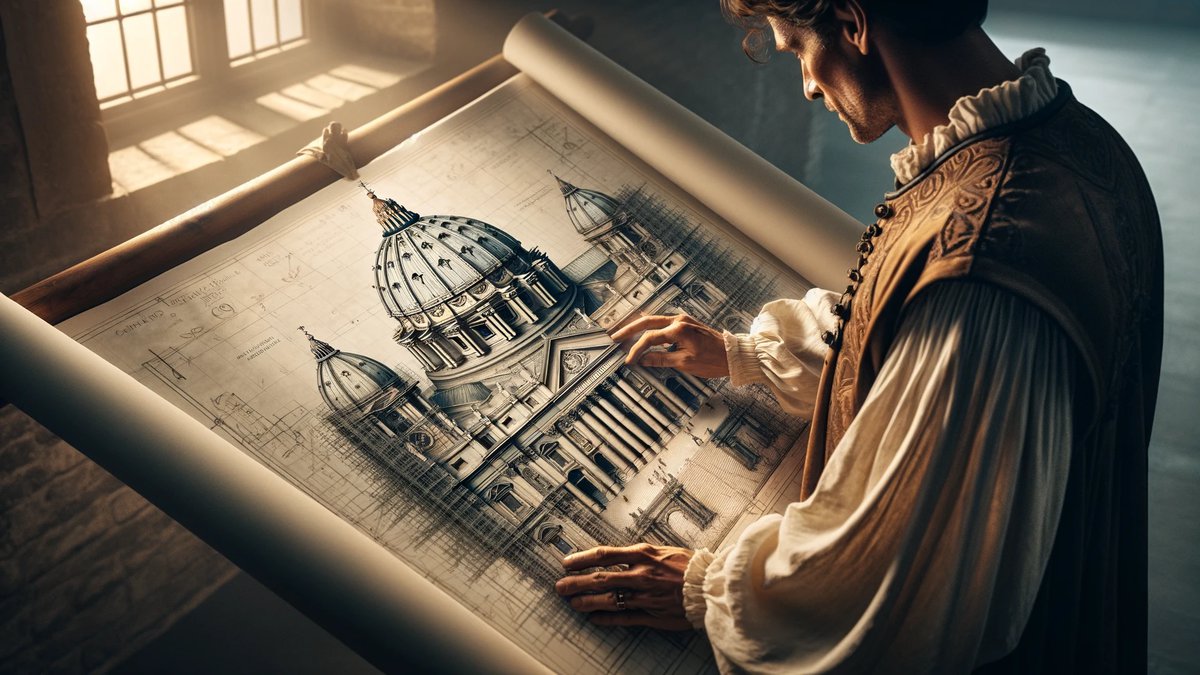Home>Arts and Culture>Who Built The Dome Of The Cathedral In Florence
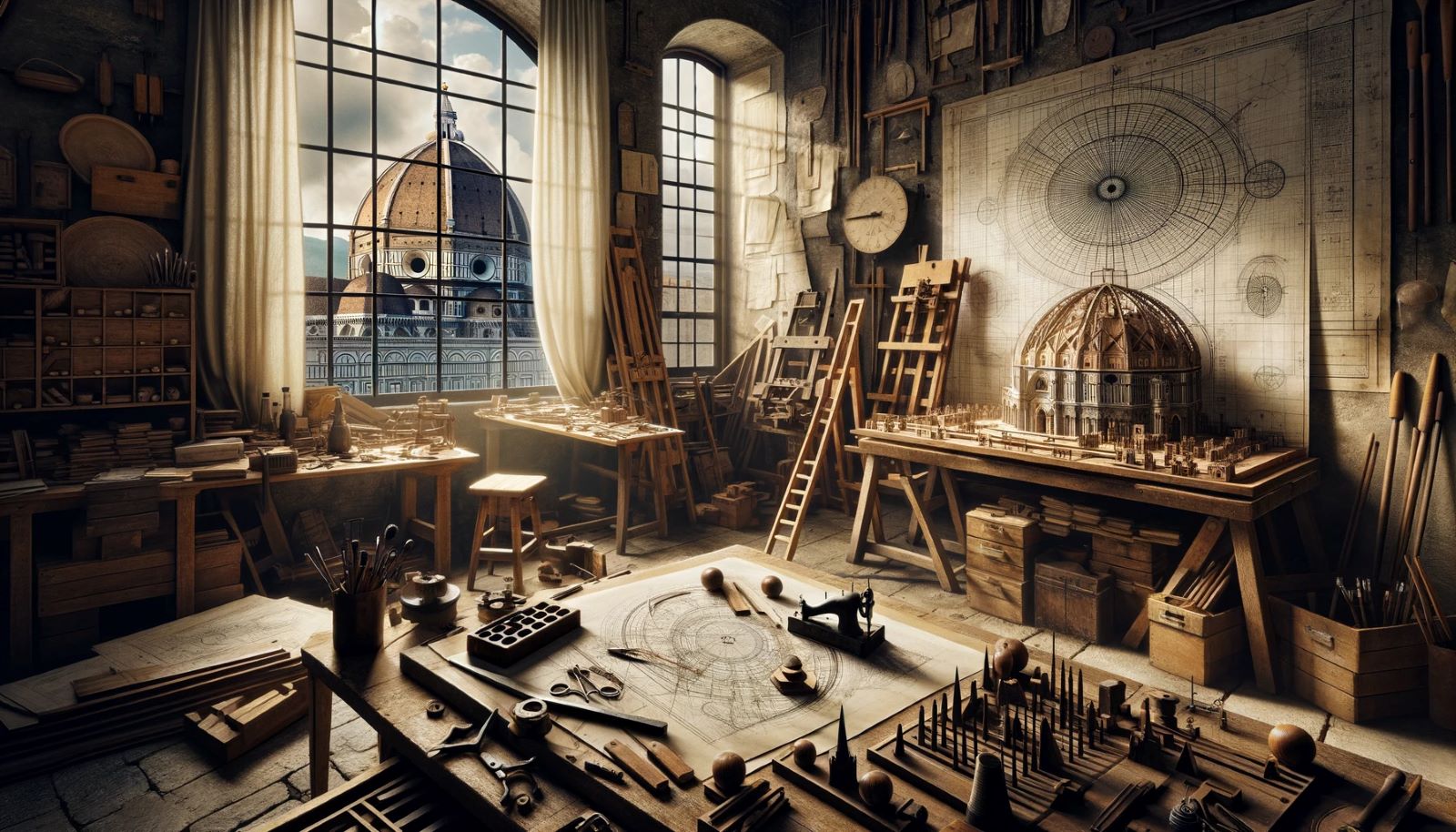

Arts and Culture
Who Built The Dome Of The Cathedral In Florence
Published: February 15, 2024
Ericka Andersen, an editor at Christian.net, expertly merges digital strategy with content creation, focusing on faith and societal issues. Her communication skills enhance the platform's engaging narratives, fostering meaningful dialogue on belief's impact on society.
Discover the masterminds behind the iconic dome of the Cathedral in Florence and delve into the rich arts and culture of Renaissance Italy. Uncover the architectural marvels and artistic heritage of this historic city.
(Many of the links in this article redirect to a specific reviewed product. Your purchase of these products through affiliate links helps to generate commission for Christian.net, at no extra cost. Learn more)
Table of Contents
Introduction
The Dome of the Cathedral in Florence, also known as the Florence Cathedral or Cattedrale di Santa Maria del Fiore, is an architectural marvel that has captivated the world for centuries. This iconic structure, with its majestic dome towering over the city, stands as a testament to human ingenuity and artistic brilliance. The construction of the dome was a monumental feat that pushed the boundaries of engineering and design during the Renaissance period.
The Cathedral, dedicated to Santa Maria del Fiore (Saint Mary of the Flower), is a symbol of Florence's rich cultural heritage and artistic prowess. Its construction began in 1296, and the grandeur of the cathedral reflects the city's aspirations for greatness. The Dome, in particular, represents a crowning achievement in the history of architecture and engineering, showcasing the innovative spirit of the Renaissance era.
As we delve into the history and construction of the Dome, we will unravel the fascinating story behind its creation and the remarkable individuals who contributed to its realization. From the visionary architect who conceived its design to the skilled artisans who brought it to life, the journey of the Dome's construction is a tale of perseverance, creativity, and unwavering dedication to excellence.
Join us on a captivating exploration of the Dome of the Cathedral in Florence, where we will uncover the remarkable ingenuity and artistry that shaped this architectural wonder. Through this journey, we will gain a deeper appreciation for the historical significance and enduring legacy of the Dome, which continues to inspire awe and admiration in the modern era.
Read more: Who Built The Dome Of The Florence Cathedral
History of the Cathedral in Florence
The history of the Cathedral in Florence, also known as the Florence Cathedral or Cattedrale di Santa Maria del Fiore, is a captivating chronicle that spans centuries and embodies the cultural and artistic essence of the city. The construction of this magnificent edifice commenced in 1296, as a testament to Florence's ambition to create a grand cathedral that would symbolize its prosperity and spiritual devotion.
The cathedral's initial design was the work of Arnolfo di Cambio, a renowned architect of the era, who envisioned a structure that would surpass the grandeur of existing churches in Florence. The cathedral's construction unfolded over several generations, with each phase reflecting the evolving architectural styles and artistic influences of the time.
One of the most striking features of the cathedral is its iconic dome, which posed a significant engineering challenge during its construction. The dome, designed by Filippo Brunelleschi, stands as a masterpiece of Renaissance architecture and engineering, representing a pivotal moment in the history of construction and design.
Throughout its history, the Cathedral in Florence has witnessed moments of triumph and adversity, including the Black Death, political upheavals, and the ever-changing artistic movements that shaped the city's cultural landscape. Despite these challenges, the cathedral endured as a symbol of resilience and artistic innovation, attracting pilgrims, scholars, and admirers from around the world.
Today, the Cathedral in Florence stands as a living testament to the enduring legacy of the Renaissance era and the artistic brilliance that defined it. Its rich history continues to inspire awe and reverence, drawing visitors to marvel at its architectural splendor and immerse themselves in the timeless allure of this cultural treasure.
As we delve deeper into the construction of the cathedral's dome and the remarkable individuals who contributed to its realization, we gain a profound understanding of the historical significance and enduring legacy of this architectural masterpiece. The cathedral's history is a tapestry of human creativity, perseverance, and unwavering dedication to excellence, leaving an indelible mark on the cultural heritage of Florence and the world at large.
The Construction of the Dome
The construction of the dome of the Cathedral in Florence stands as a testament to human ingenuity and engineering prowess. The ambitious project, initiated in the 14th century, presented a monumental challenge that demanded innovative solutions and unwavering determination. The construction of the dome was a groundbreaking endeavor that pushed the boundaries of architectural and engineering capabilities during the Renaissance period.
The dome's construction commenced in 1420, under the guidance of the visionary architect Filippo Brunelleschi. His revolutionary design and engineering ingenuity paved the way for the realization of a dome that would defy the limitations of contemporary construction techniques. Brunelleschi's innovative approach to the dome's construction involved the use of a double-shelled structure, incorporating a unique herringbone pattern to distribute the immense weight of the dome effectively.
One of the most remarkable aspects of the dome's construction was the absence of scaffolding, a feat that astonished contemporaries and continues to inspire awe in modern times. Brunelleschi devised a complex system of hoists, cranes, and innovative machinery to facilitate the construction process without the need for traditional scaffolding. This ingenious approach not only showcased Brunelleschi's engineering brilliance but also demonstrated his ability to overcome seemingly insurmountable challenges.
The construction of the dome was a labor-intensive endeavor that relied on the expertise of skilled craftsmen and laborers. The meticulous placement of over four million bricks, meticulously arranged in a herringbone pattern, required a level of precision and craftsmanship that reflected the dedication and artistry of the workers involved in the project. The collaborative effort of these artisans, under Brunelleschi's guidance, culminated in the creation of a dome that would redefine the possibilities of architectural design and construction.
As the construction of the dome progressed, it became a symbol of Florence's ambition and artistic innovation, attracting attention from across Europe. The completion of the dome in 1436 marked a historic triumph, solidifying Brunelleschi's legacy as a pioneering architect and engineer. The dome's successful construction not only transformed the skyline of Florence but also inspired future generations of architects and engineers to push the boundaries of what was deemed achievable in the realm of architectural design and construction.
The construction of the dome of the Cathedral in Florence stands as a testament to human ingenuity, artistic vision, and unwavering determination. Its completion represents a defining moment in the history of architecture, showcasing the remarkable achievements of the Renaissance era and the enduring legacy of those who dared to dream beyond the constraints of their time.
The Architect of the Dome
The architect behind the awe-inspiring dome of the Cathedral in Florence was none other than Filippo Brunelleschi, a visionary Renaissance polymath whose groundbreaking contributions reshaped the landscape of architecture and engineering. Born in Florence in 1377, Brunelleschi's early exposure to the artistic and intellectual milieu of the city laid the foundation for his remarkable career as an architect, sculptor, and innovator.
Brunelleschi's journey to becoming the architect of the dome was marked by a relentless pursuit of knowledge and a fervent dedication to mastering the principles of architecture and engineering. His formative years were shaped by an apprenticeship with the renowned sculptor Lorenzo Ghiberti, where he honed his skills in sculpture and gained a deep understanding of classical art and architecture.
The pivotal moment in Brunelleschi's career came when he traveled to Rome to study the ancient architectural marvels, including the Pantheon, whose monumental dome would later inspire his revolutionary design for the Florence Cathedral. His meticulous study of ancient Roman engineering techniques and his profound grasp of mathematical principles equipped him with the expertise needed to undertake the ambitious task of designing and constructing the cathedral's dome.
Brunelleschi's unwavering determination and innovative spirit propelled him to propose a daring and unprecedented design for the dome, which defied the conventional methods of construction. His visionary approach, characterized by the use of a double-shelled structure and a unique herringbone pattern, showcased his unparalleled ingenuity and engineering prowess.
Throughout the arduous process of realizing his design, Brunelleschi demonstrated exceptional leadership and problem-solving skills, overcoming numerous challenges with remarkable resilience and creativity. His ability to devise a system of hoists and cranes that eliminated the need for traditional scaffolding stands as a testament to his inventive genius and practical acumen.
The successful completion of the dome in 1436 solidified Brunelleschi's legacy as a pioneering architect and engineer, earning him widespread acclaim and cementing his status as one of the preeminent figures of the Renaissance. His innovative contributions to the field of architecture, exemplified by the dome of the Cathedral in Florence, continue to inspire and influence architectural discourse and practice to this day.
In essence, Filippo Brunelleschi's indelible imprint on the architectural landscape of Florence and his groundbreaking achievements in engineering and design underscore his enduring legacy as the mastermind behind one of the most iconic and influential architectural feats in history.
The Engineering and Design of the Dome
The engineering and design of the dome of the Cathedral in Florence represent a pinnacle of architectural innovation and technical ingenuity. Conceived and executed by the visionary architect Filippo Brunelleschi, the dome's construction posed unprecedented challenges that demanded groundbreaking solutions. At the heart of its design lay a revolutionary approach to structural integrity and architectural form, setting a new standard for monumental domes and shaping the course of architectural history.
Brunelleschi's design for the dome incorporated a double-shelled structure, a daring departure from traditional construction methods. This innovative approach involved the use of an inner and outer shell, ingeniously engineered to distribute the immense weight of the dome effectively. The incorporation of a herringbone pattern within the brickwork further enhanced the dome's stability, allowing it to withstand the forces exerted upon it without the need for additional supports.
One of the most remarkable aspects of the dome's engineering was the absence of scaffolding during its construction. Brunelleschi's ingenious solution to this challenge involved the creation of a complex system of hoists, cranes, and innovative machinery, enabling the seamless assembly of the dome without the conventional framework of support. This feat astonished contemporaries and continues to inspire awe, underscoring Brunelleschi's unparalleled engineering prowess and practical acumen.
The meticulous planning and execution of the dome's construction reflected Brunelleschi's profound understanding of mathematical and architectural principles. His mastery of geometry and structural mechanics enabled him to devise a design that not only defied the limitations of contemporary construction techniques but also set a new standard for architectural innovation. The dome's graceful curvature and harmonious proportions stand as a testament to Brunelleschi's exceptional skill in marrying aesthetic beauty with structural integrity.
As the construction of the dome progressed, it became a symbol of Florence's ambition and artistic innovation, attracting attention from across Europe. The successful completion of the dome in 1436 marked a historic triumph, solidifying Brunelleschi's legacy as a pioneering architect and engineer. His innovative contributions to the field of architecture, exemplified by the dome of the Cathedral in Florence, continue to inspire and influence architectural discourse and practice to this day.
In essence, the engineering and design of the dome of the Cathedral in Florence stand as a testament to human ingenuity, artistic vision, and unwavering determination. Its completion represents a defining moment in the history of architecture, showcasing the remarkable achievements of the Renaissance era and the enduring legacy of those who dared to dream beyond the constraints of their time.
Read more: Who Painted Florence Cathedral Dome
The Legacy of the Dome
The legacy of the dome of the Cathedral in Florence transcends its physical presence, leaving an indelible mark on the realms of architecture, engineering, and artistic expression. As a testament to human ingenuity and creative vision, the dome's enduring legacy resonates through the annals of history, inspiring generations and shaping the evolution of architectural discourse.
At its core, the dome stands as a symbol of Renaissance innovation and the relentless pursuit of excellence. Its construction marked a pivotal moment in the advancement of architectural and engineering capabilities, challenging the perceived boundaries of what was achievable in monumental construction. The successful realization of the dome under the guidance of Filippo Brunelleschi not only transformed the skyline of Florence but also set a new standard for architectural grandeur and technical achievement.
The dome's legacy extends beyond its structural significance, encompassing its profound influence on subsequent architectural movements and the cultivation of a design ethos that prioritizes both aesthetic beauty and structural integrity. Brunelleschi's innovative approach to the dome's engineering, characterized by the use of a double-shelled structure and a unique herringbone pattern, continues to inspire contemporary architects and engineers, serving as a timeless exemplar of ingenuity and visionary design.
Furthermore, the dome's legacy is intertwined with its cultural and artistic impact, as it has become an enduring symbol of Florence's rich heritage and the city's enduring commitment to artistic excellence. Its graceful silhouette and majestic presence have captured the imagination of artists, writers, and travelers for centuries, serving as a muse for creative expression and a testament to the enduring allure of architectural marvels.
The legacy of the dome of the Cathedral in Florence is also evident in its role as a beacon of human achievement and aspiration. Its construction stands as a testament to the collaborative spirit of artisans, craftsmen, and visionaries who dedicated themselves to the pursuit of a shared artistic vision. This legacy of collaboration and unwavering dedication to excellence continues to resonate in the contemporary ethos of architectural and engineering endeavors, emphasizing the transformative power of collective ingenuity and creative endeavor.
In essence, the legacy of the dome of the Cathedral in Florence endures as a testament to the transcendent power of human creativity and the enduring impact of visionary design. Its influence reverberates through the corridors of architectural history, inspiring awe and admiration while serving as a timeless testament to the boundless potential of human ingenuity.
